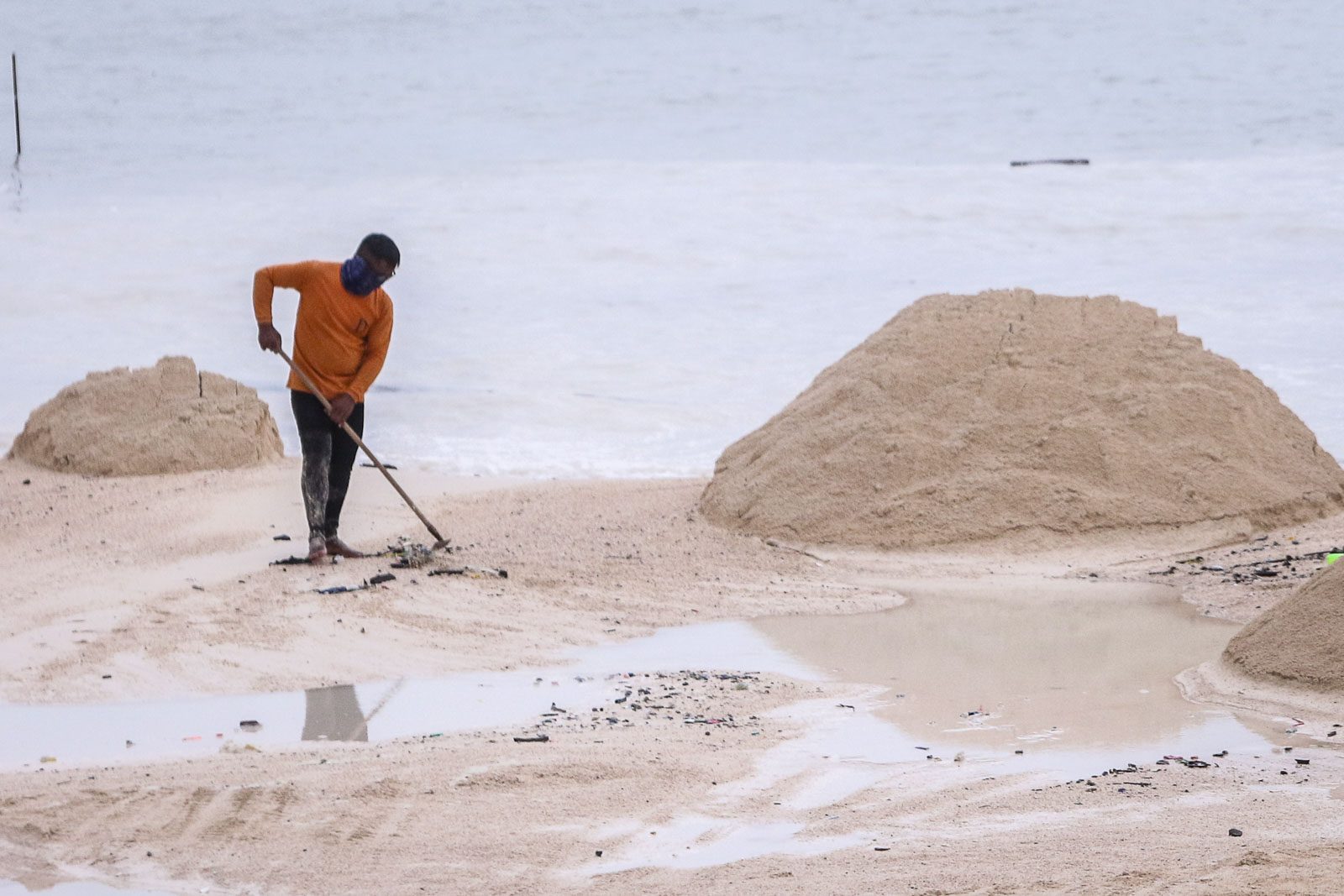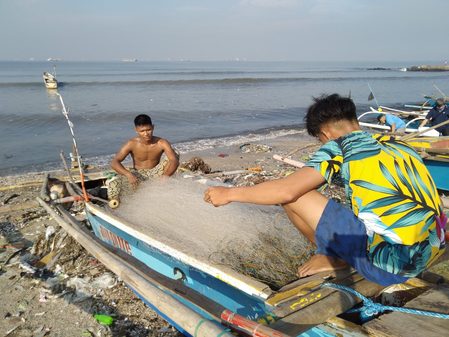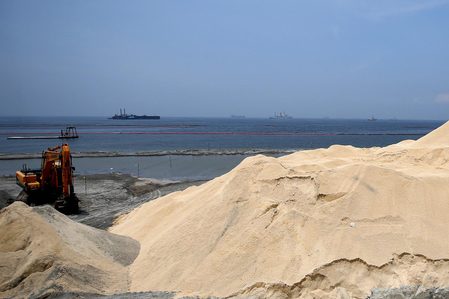SUMMARY
This is AI generated summarization, which may have errors. For context, always refer to the full article.

Marine scientists from the University of the Philippines (UP) on Wednesday, September 30, said the crushed dolomite that was dumped along parts of the Manila Baywalk “will not help solve the root of environmental problems in Manila Bay.”
“There are no shortcuts to a cleaner environment…. At most, [the dumping of crushed dolomite in Manila Bay] is a beautification effort that is costly and temporary. The task of cleaning and restoring Manila Bay may be daunting, but it needs to be done for future generations of Filipinos to benefit from its many uses,” the UP Marine Science Institute said in a statement.
The institute said cleaning up the bay and addressing its longstanding environmental problems would entail “government interventions, social and community behavioral change, and [implementation of] legislation and policy guidelines.”
The UP Marine Science Institute especially highlighted how “a big part of the [Manila] Bay’s environmental problems comes from poor waste management.”
The group said these could be attributed to the lack of wastewater treatment plants surrounding the watershed of the bay, and the loss of natural cleanup from ecosystem services such as mangroves, leading to the massive pollution in the area.
They added how wastewater treatment plants and natural cleanup from ecosystem services are essential as they help filter and remove pollutants that drain from urban and residential areas and into the bay.
According to the group, Manila Bay also faces the threat of erosion, further exacerbated by additional reclaimed areas found south of the baywalk.
Dolomite’s impact
Aside from those threats, the institute said Manila Bay might face new challenges due to the crushed dolomite dumped on its baywalk. Last September 19, the artificial white sand beach was opened to the public despite opposition from environment watchdogs, civil society groups, and netizens.
Seeing the dumping of dolomite as a violation of the government’s obligation to rehabilitate Manila Bay, progressive group Akbayan filed a motion with the Supreme Court to cite the environment department in contempt over the controversial project.
With the “white sand” project pegged at P389 million, the UP Marine Science Institute in its statement raised concerns about the high costs of continuously replacing the sand with crushed dolomite which the scientists believe “will not contribute to improving water quality in the bay.”
The institute said that with the threat of erosion in Manila Bay, crushed dolomite would only erode and be carried out to sea in case of rain and heavy rainfall pounding the baywalk area.
“The addition of dolomites crushed to 2-5 mm diameter cannot serve to anchor the loss of beach sand, nor serve as replacement for eroded sediments…. Beach nourishment projects are not one-shot deals, especially for continuously eroding shorelines,” they said.
Aside from its environmental impact, the UP Marine Science Institute also warned that finer particles of dolomite are problematic as dust inhalation may cause discomfort in the chest, shortness of breath, and coughing. They added that prolonged inhalation may cause chronic health effects.
The Department of Health had earlier said that “dolomite in its bulk state is not a health hazard.”
The UP Marine Science Institute said that instead of turning to dolomite to aid in the rehabilitation of the bay, the government should focus on investing in wastewater treatment plants; transferring informal settlers, especially those in the riverbank and coastal areas; and reforesting in watershed areas.
“The cleanup of Manila Bay will be a long and arduous task. It must be a concerted effort by everyone living in its watersheds and those using the bay,” the institute said. – with reports from Russell Ku/Rappler.com
Add a comment
How does this make you feel?


There are no comments yet. Add your comment to start the conversation.